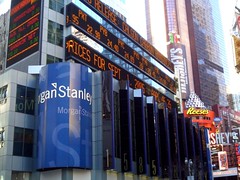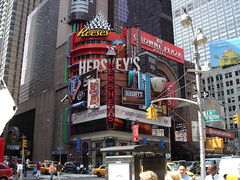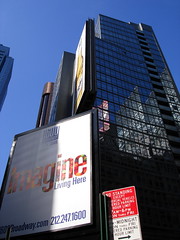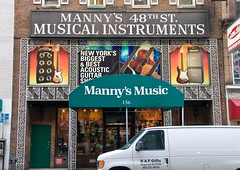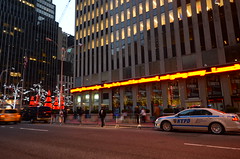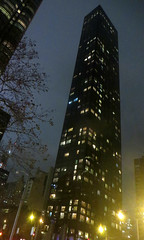North:
The land that is now Rockefeller Center was once the
Elgin Botanic Garden, 20 acres of mainly medicinal
herbs established by Dr. David Hosack, the physician
who attended Alexander Hamilton after his fatal
duel with Aaron Burr. The Lewis and Clark expedition
sent plants here for identification.
The garden was sold to the state in 1810, which
granted it to Columbia University, which allowed
the garden to be developed. In 1929, the land was
leased to John D. Rockefeller, who built on it an
Art Deco masterpiece that is one of New York City's
crowning glories.
Simon & Schuster Building
Corner (1230 6th Ave): Built in 1940 as the U.S. Rubber
Building, this marks the southeastern corner of the
original Rockefeller Center project. Simon &
Schuster, founded in 1924 and perhaps most
notable as the parent company of
Pocket Books, is now part of Viacom.
This building used to house the clubby AJ Maxwell's Steakhouse, which was previously the excitingly named
Forum of the Twelve Caesars.
61: A brownstone here was the
headquarters of
Boni & Liveright, the first
publishers of Eugene O'Neill, Ernest Hemingway,
William Faulkner, Hart Crane, Dorothy Parker,
S. J. Perelman, John Reed, Max Eastman
and Mary Heaton Vorse. Bennett Cerf, who founded
Random House, and Richard Simon of
Simon & Schuster both worked here, as did Lillian
Hellman. The
Modern Library was founded by Boni & Liveright
in 1917, bought by Cerf in 1935 and became the core
of Random House.
20 Rockefeller Plaza: This is the
address of Christie's, the famous auction house.
10 Rockefeller Plaza: Formerly the Eastern
Airlines Building; Rockefeller Center was officially completed on
November 1, 1939 when John D. Rockefeller drove
a silver rivet into this building.
The Story of
Transportation (1944) is the rather sexy mural
here by
Dean Cornwell. There's a
Nintendo World store here that used to be the
Pokemon Center during the height of the
Japanese cartoon craze.
|

